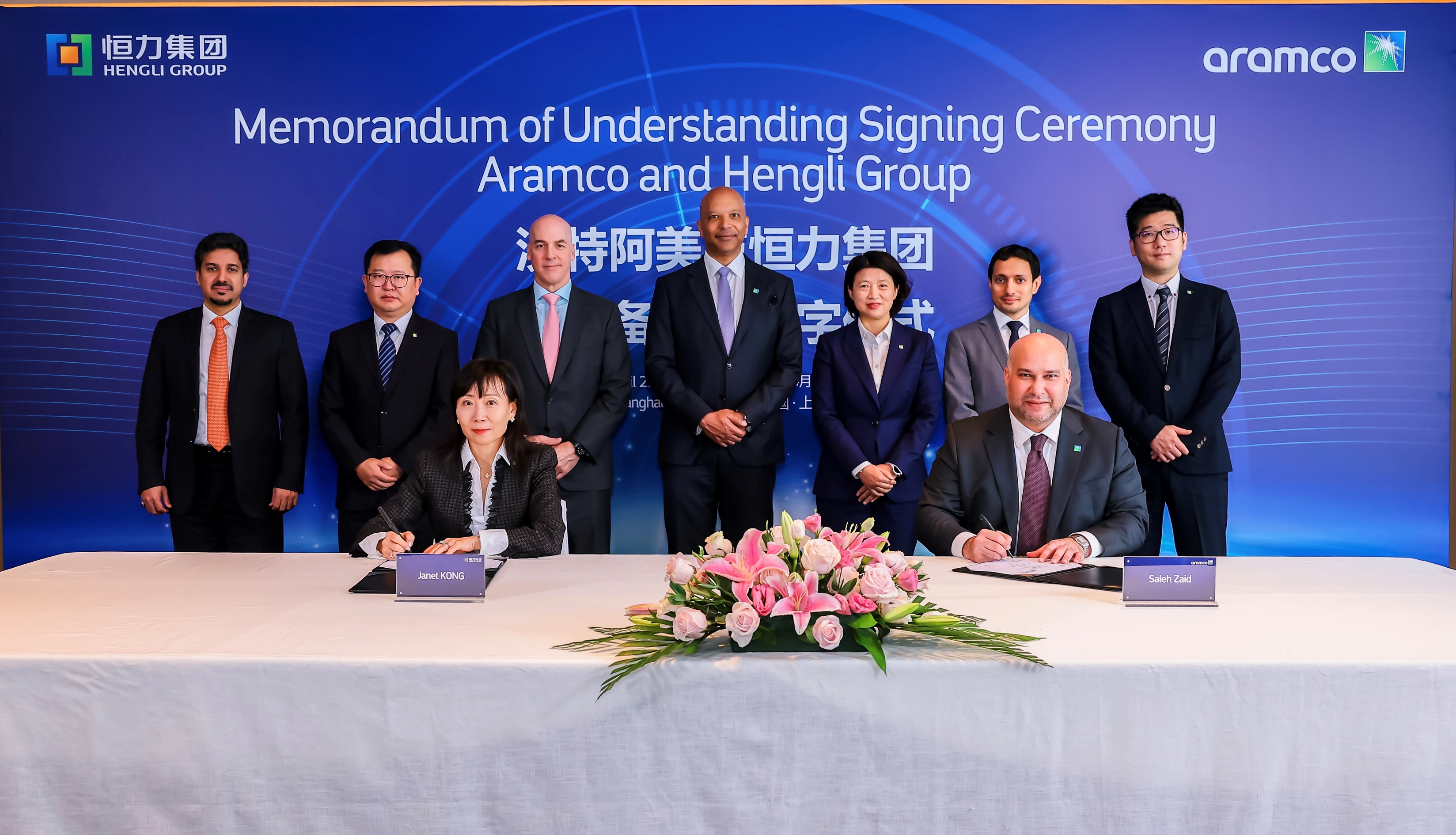아람코, 중국 기업 ‘헝리 페트로케미컬’ 지분 10% 인수 협의

양해각서 체결식에서 자넷 공 헝리 그룹 CEO(왼쪽)와 살레 알 자이드 아람코 아시아 사장 대행(오른쪽). 뒷줄 왼쪽부터 순서대로: 나세르 라슬룸 아람코 아시아 다운스트림 사업 개발 수석부사장, 리펑 헝리 페트로케미컬 이사, 부총재 겸 이사회 비서, 앤드류 카츠 아람코 다운스트림 성장 및 개발 부사장, 야세르 M. 무프티 아람코 제품 및 고객 담당 총괄수석부사장, 안 진샹 헝리 그룹 총괄 매니저, 네이더 아르파즈 아람코 중국 대표 대행, 알버트 램 헝리 페트로케미컬 해외 사업 개발 책임자.
글로벌 종합 에너지∙화학 기업 아람코가 헝리 페트로케미컬의 지분 10%를 인수하는 건에 대한 협의를 시작했다. 이는 실사 및 규제 승인을 조건으로 한다.
양사가 체결한 양해각서는 주요 고부가가치 시장에서 다운스트림 입지를 확대하고 liquids-to-chemicals 프로그램을 발전시키며 장기 원유 공급 계약을 체결하려는 아람코의 전략에 부합한다.
헝리 그룹의 지배 자회사인 헝리 페트로케미컬은 중국 랴오닝성에서 하루 40만 배럴 규모를 생산하는 정유 및 통합 화학 콤플렉스를 소유, 운영하고 있으며, 이외 장쑤성, 광둥성에도 여러 공장과 생산 시설을 보유하고 있다.
모하메드 Y. 알 카타니(Mohammed Y. Al-Qahtani) 아람코 다운스트림 사장은 “이번 양해각서 체결은 글로벌 다운스트림 사업을 확장하려는 아람코의 노력을 뒷받침한다. 우리는 liquids-to-chemicals 전략을 진전시키는 동시에, 중요 시장에서의 새로운 기회를 지속적으로 발굴하고 있다. 그리고 새로운 파트너십 구축을 기대하며, 중요한 중국 시장에서 아람코의 입지를 확대하는 것을 기쁘게 생각한다”고 말했다.
